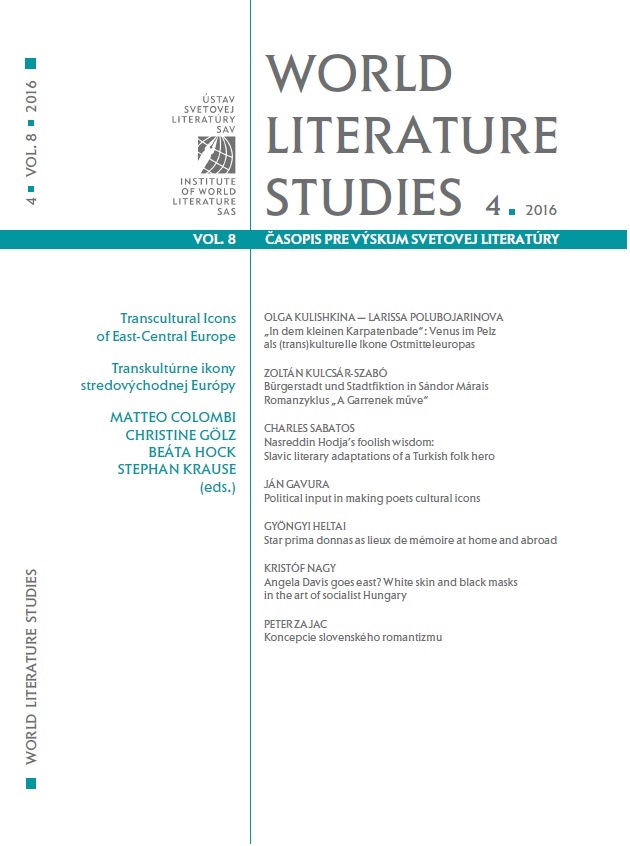Bürgerstadt und Stadtfiktion in Sándor Márais Romanzyklus „A Garrenek műve“
The bourgeois city and fiction of urbanism in Sándor Márai's novel sequence ”A Garrenek műve“
Author(s): Zoltán Kulcsár-SzabóSubject(s): Language and Literature Studies
Published by: SAV - Slovenská akadémia vied - Ústav svetovej literatúry
Keywords: Bourgeois; City; Parody; Theatricality; Sándor Márai
Summary/Abstract: The paper discusses Sándor Márai’s cultural concept of the bourgeois (polgár) from a specificangle. Represented by the author’s native town of Košice (Kassa) and carrying an inherenttendency toward fictionalization, Márai’s idealized concept of the bourgeois city appears asthe central issue of his novel series A Garrenek műve (The Garrens’ Work), often considered asa kind of epopee of the Hungarian bourgeoisie. The paper concentrates on the first volume,Zendülők (The Rebels), written in 1930, and focuses on the work’s fictional topology, whichis governed by the conceptual metaphor city as body, and the concept of theatricality underlyingthe strategies of narrative representation. In conclusion, it raises the question of whethera culture, in Márai’s view, can possess any efficient means to interpret itself in a way that is notgiven over to parodistic tendencies.
Journal: World Literature Studies
- Issue Year: 8/2016
- Issue No: 4
- Page Range: 19-34
- Page Count: 16
- Language: German

